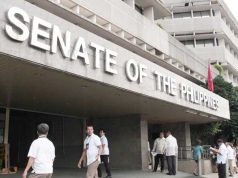Domestic trade rises over 20% by value in third quarter
DOMESTIC TRADE rose 20.1% year-on-year by value in the third quarter led by machinery and transport equipment, despite nearly flat volumes overall, according to the Philippine Statistics Authority (PSA).
According to preliminary data, the total value of domestic trade rose to P204.53 billion in the three months to September from P170.33 billion a year earlier.
By volume, domestic trade grew 0.8% to 5.09 million tons.
In the three months to September, machinery and transport equipment accounted for 30.4% of total value, up 13% year-on-year at P62.15 billion.
Food and live animals accounted for 23.42% of domestic volume, and increased 20.7% during the quarter to 1.19 million tons. In terms of value, the category grew 20.9% to P51.58 billion.
The biggest volume gains were posted by the “other” category, covering traded goods not otherwise classified in the Philippine Standard Commodity Classification (335.4%); animal and vegetable oils, fats and waxes (118.4%); miscellaneous manufactured articles (38.9%); manufactured goods classified chiefly by material (24.7%); machinery and transport equipment (12.1%); and beverages and tobacco (7.1%).
Double-digit declines in volume were posted by crude materials, inedible, except fuels (minus 57.3%); chemical and related products (minus 52.9%); and mineral fuels, lubricants and related materials (minus 27.1%).
The National Capital Region remained the top source of commodities with outflows amounting to P77.48 billion. It recorded a domestic trade surplus of P61.37 billion during the quarter.
Central Visayas, meanwhile, was the top destination of commodities with total inflows amounting P51.02 billion, bringing the region’s domestic trade deficit to P42.02 billion in the three months to September.
Asked to comment, Rizal Commercial Banking Corp. (RCBC) Chief Economist Michael L. Ricafort said: “The resilience of the domestic trade growth may reflect increased economic activity and faster economic growth in various regions [across] the country…”
He noted that the movement of goods, services, and people in “fast-developing and high-growth” regions have increased, as “big retailers, property companies, and other business chains have been aggressively expanding in key regions.”
“New or additional sources of revenue, including the creation of township projects, BPO office spaces, POGO (Philippine Offshore Gaming Operators) spaces (have increased) since the costs of doing business such as rentals or leases and labor are much lower compared to those in Metro Manila,” he said in an e-mail.
Mr. Ricafort added that the government’s increased spending, especially on infrastructure as well as the creation of more tourist destinations apart from “traditional” areas, has created “more opportunities for trade, investments, employment, and other business opportunities.
Economic growth was 6.2% in the third quarter, the highest so far this year In the earlier part of the year, government spending was hampered by the four-month delay in the passage of the 2019 budget.
Government spending growth picked up in the third quarter at 9.6%, higher than the 7.3% in the second quarter, but lower than the year-earlier 14.3%.
Going forward, Mr. Ricafort said: “(T)he relatively faster growth in domestic trade could still be sustained for the rest of the year, reflecting the resilience of the growth in consumer spending… (and) the catch-up spending by the government, especially on infrastructure.”
He also noted the “sharp decline” in headline inflation and benchmark interest rates will make “financing costs cheaper and encourage more business/economic activities and faster economic/GDP growth.”
Third-quarter headline inflation was 1.7% in the third quarter, down from 3% in the second quarter. In the year to date, inflation averaged 2.8%. The relatively low inflation environment follows successive 175-basis point (bp) rate hikes by the Bangko Sentral ng Pilipinas (BSP) in 2018 to rein in inflation within the government’s 2-4% target range. — Jobo E. Hernandez



